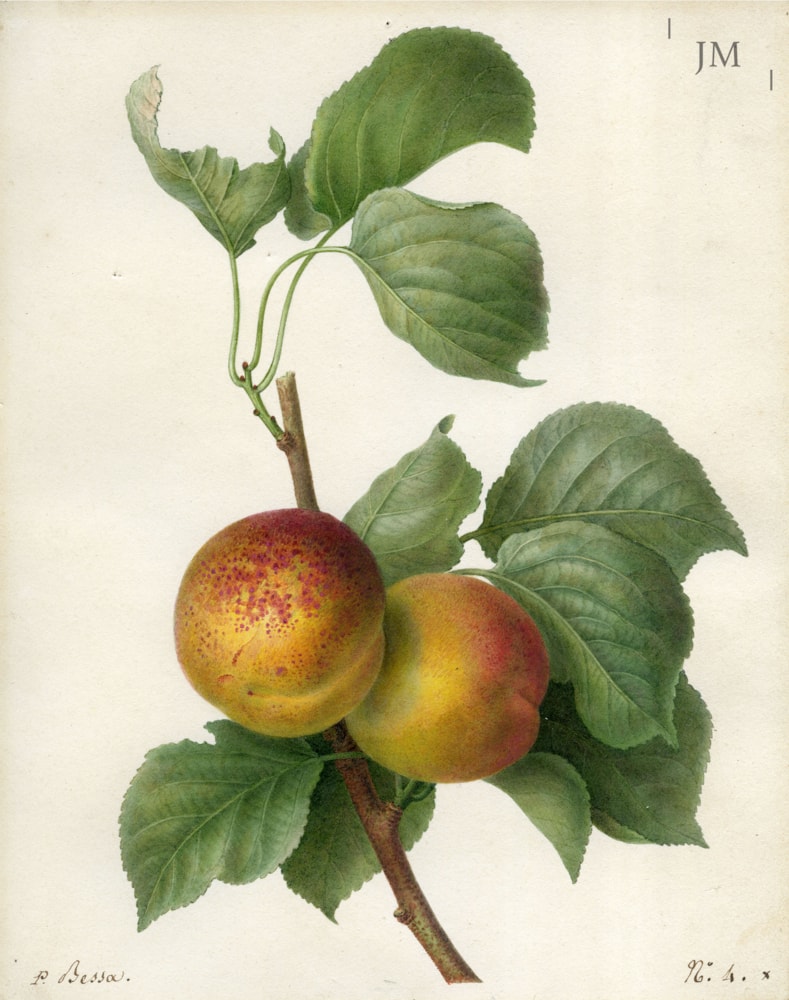Pancrace Bessa ( 1772 - 1846 )
A study of apricots


A study of apricots
watercolour
9¾ x 7⅝ in. (24.7 x 19.5 cm.)
signed
with fine antique French frame
item sold
‘In the case of an artist like Pancrace Bessa it is difficult to know whether he would have succeeded without instruction from Redouté, or whether he is unjustly overshadowed by the great master.’ So wrote my father in his European Flower Painters of 1973, a copy of which must adorn the shelves of many of our more established clients and which provides a neat summary of Bessa’s life. All that can be added is that Bessa lived in a veritable golden age of natural history science, with many new plants arriving in France to be cultivated in the botanical gardens of the Musée national d'Histoire Naturelle (commonly known as the ‘Jardin des Plantes’), of the royals and of the aristocracy. These new plants required classification, description and illustration, and Bessa was one of hundreds of trained botanical artists who devoted themselves to this task. Bessa painted the originals for one of the most important French periodicals of the period—Mordant de Launay's (and later Loiseleur-Deslongchamp's) Herbier Général de l'Amateur (Paris, [1810–]1816–1827)— depicting in watercolour on vellum five hundred and seventy-two rare and new plants growing in the gardens of Paris. Bessa was also a teacher of flower painting, and one of his pupils was also his patroness—the Duchesse de Berry, sister-in-law of Charles X. The king then purchased all of the originals for the Herbier as a gift for the duchess.

